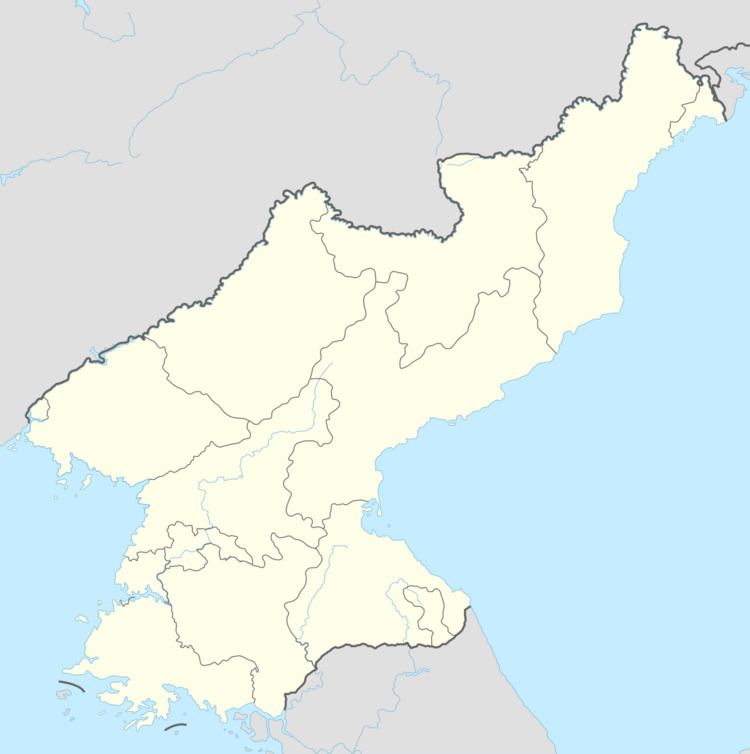Chosŏn'gŭl 함흥 제9호 교화소 Chosŏn'gŭl 함흥 정치범 수용소 | Hancha 咸興第四號敎化所 Hancha 咸興政治犯收容所 | |
 | ||
Revised Romanization Hamheung Je9ho Gyohwaso McCune–Reischauer Hamhŭng Che9ho Kyohwaso | ||
Hamhung concentration camp (also spelled Hamheung) is a reeducation camp in North Korea. The official name of the camp is Kyo-hwa-so No. 9 (Reeducation camp no. 9). The sub-facility for women is sometimes called Kyo-hwa-so No. 15.
Contents
Location
The camp is located in Humhung city, in South Hamgyong province of North Korea. The main facility for male prisoners is situated in Hoesang-dong, about 6 km (3.7 mi) northeast of downtown Hamhung. The sub-facility for female prisoners is across the railway station near Songwon-ri, a little village about 18 km (11 mi) northeast of the city center. Smaller sub-facilities are in Chongpyong county and in Kowon county, both also in South Hamgyong province.
Description
Hamhung concentration camp consists of five departments:
Besides some common criminals there are many political prisoners, especially repatriated refugees in the camp.
Living conditions
The facilities are described as very primitive, especially in the 3rd department: clay walls, a thatched roof and a rock floor. Many prisoners sleep on straw and grass. In the 1st department prisoners sleep on the factory bridges to avoid the lice-infested concrete floor. Food rations are very small and prisoners are always hungry. They only get some steamed corn and a watery cabbage soup or some bean porridge, but no salt or protein. In order to survive, the prisoners eat raw mice, snakes, frogs and insects they can find or grass, tree leaves or bark. Some prisoners even eat undigested beans or corn kernels from cow dung, although they are punished when detected. Ill prisoners still have to work to avoid beatings and reduced food rations. There is just one military doctor in the prison, no medical devices and almost no medicine. Prisoners often get infected when getting injections.
Working conditions
Former prisoners said they had to work from 5:00 a. m. (except in winter) to 7:00 p. m. with only two breaks. In the 3rd department women have to do hard farm work with poor and inadequate tools regardless of the weather. After dinner all prisoners have to attend re-education and mutual criticism sessions, often until 10:00 p.m. If prisoners fail to memorize the teachings of Kim Il-sung, their prison term is extended. The prison is surrounded by an electric fence and the prisoners are guarded by security officers 24 hours day and night.
Human rights violations
Former prisoners reported that inmates look like skeletons barely covered with skin or skinny sticks with big heads. In case prisoners do not meet their work quota or violate rules (e. g. if they steal food) they are severely kicked or beaten with rifle butts or wooden sticks. One of the witnesses described how she was beaten more than 30 times, though her head was injured and her ears and nose were bleeding. Another common punishment is the significant reduction of food rations. Prisoners in solitary confinement get almost no food. In 2003 a former prisoner witnessed a public execution by firing squad with all prisoners gathered to watch. Witnesses testified that in winter 1999/2000 around 500 prisoners died in six months Many of them died in hard and dangerous work, when a tunnel from Hamhung concentration camp to Oro concentration camp was dug. Bang Mi-sun reported that during her 18 months prison term around 20% of prisoners in her work group and in other work groups died. Corpses are burnt in large quantities in a furnace. Female prisoners are often sexually assaulted and sometimes raped by security officers. Pregnant women are taken outside the prison to get a forced abortion.
